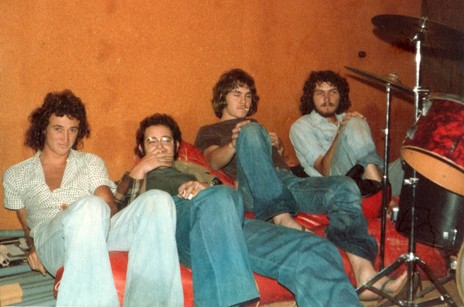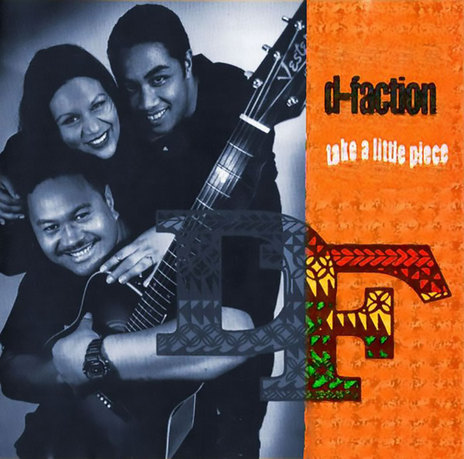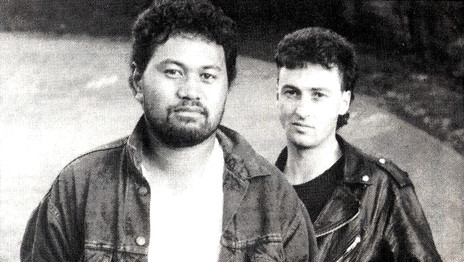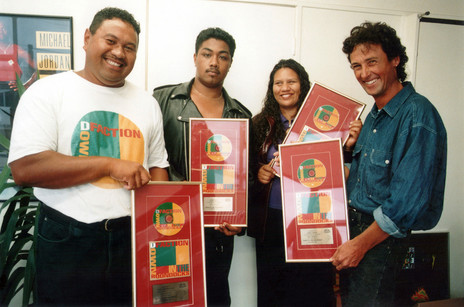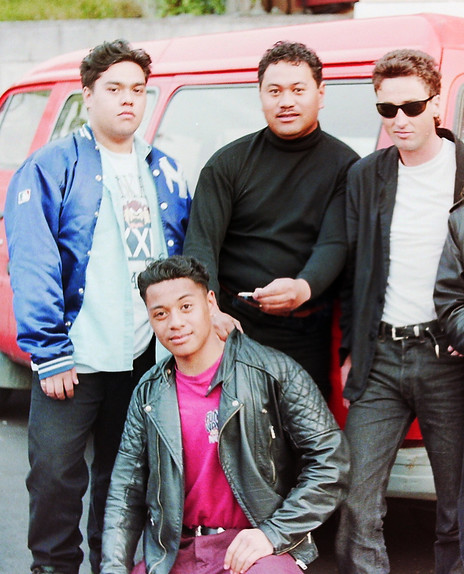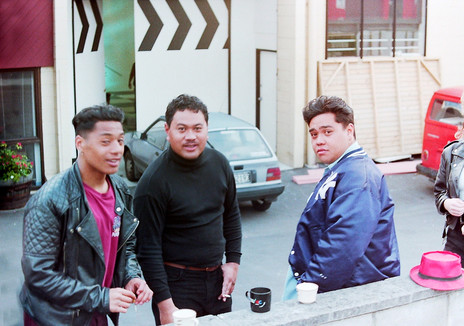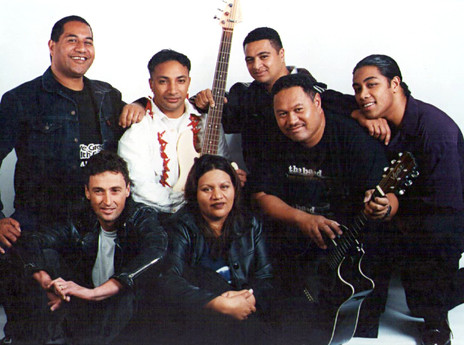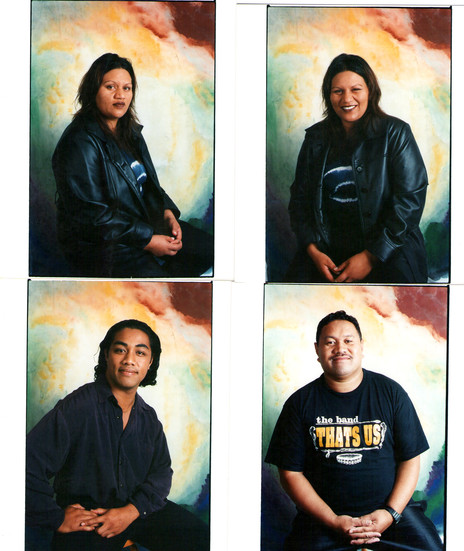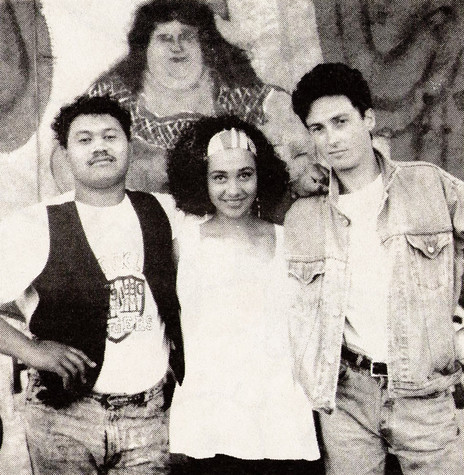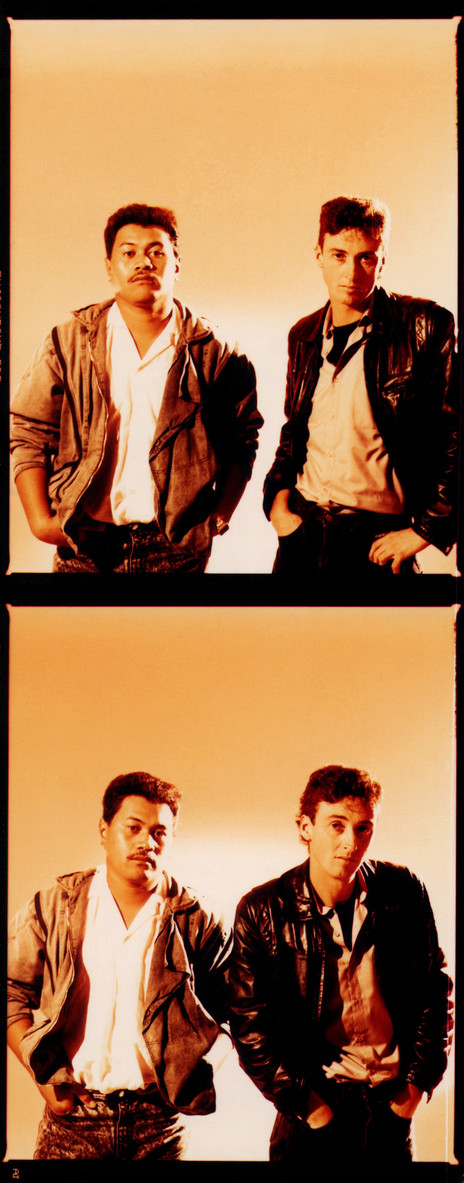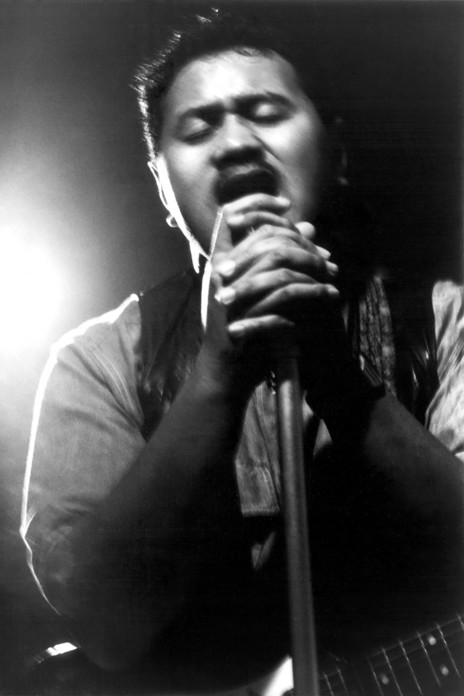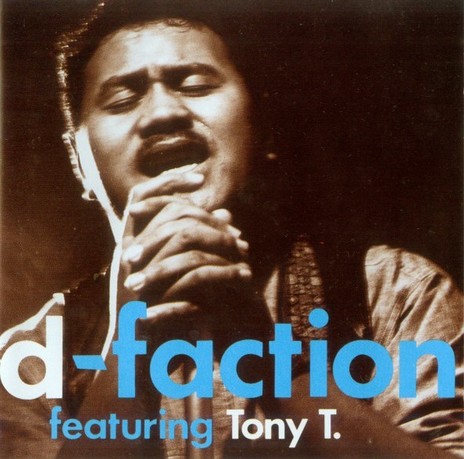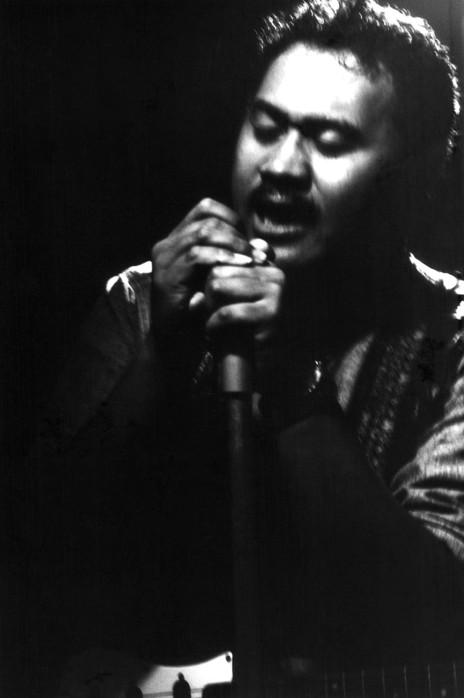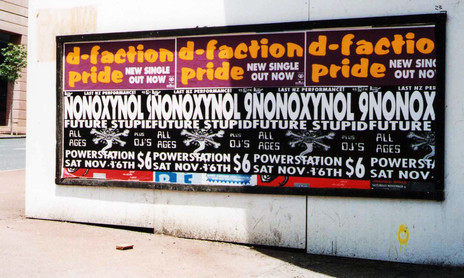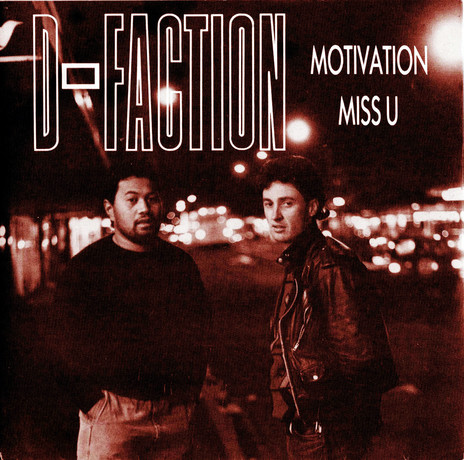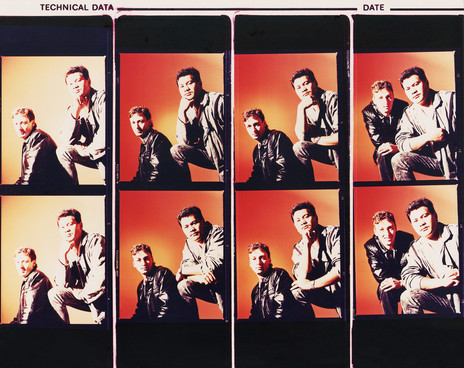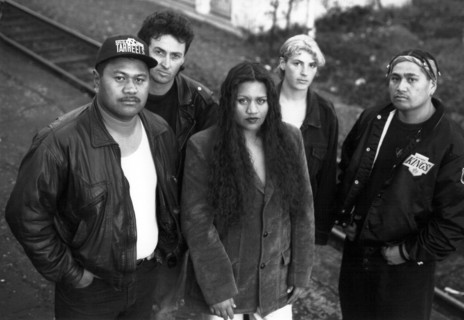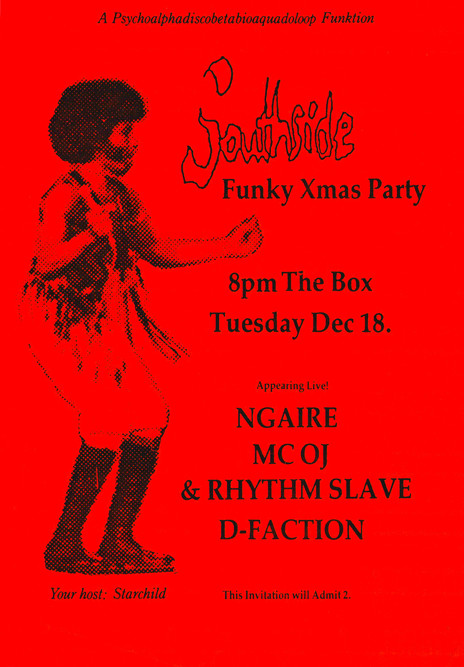Simon Lynch had music lessons from age five and was on track to become a concert pianist when a skateboard accident in his teens damaged his wrist. He was secretly relieved, having fallen in love with bands such as The Beatles and The Seekers. He took up the guitar and played in the Snipes, the Valentinos and Broken Dolls, though soon realised he was better off on keyboards. An ad in the newspaper got him a gig as a working musician and he entered the vibrant nightclub scene that included central city clubs like Aladdins, Peppermill and Trillos – or in East Auckland at Cleopatra’s. He also played clubs in South Auckland, which was convenient since he was originally from Papakura.
His group often backed visiting US acts or local floorshow performers such as Moana Maniapoto (part of the duo Aro Moana), Leo De Castro, and Willie Hona (pre-Herbs). Gradually his musical tastes changed.
“I got really immersed into the funk, just by osmosis. There was this great music coming out – Kool and the Gang; Earth, Wind, and Fire. I thought, ‘hey, this music has a bit more going on than your usual three-chord stuff’. So I started playing that style and my main gig was at Cleopatra’s, which was around the beginning of 83. I was in the resident band Sidewalk for two and a half years, playing every single weekend. Then Ardijah came up and eventually usurped us, but I was offered the position of keyboard player with them.”
When Simon Lynch talked with Tony Nogotautama, he felt an instant connection
Lynch had already been impressed by Ardijah’s young guitarist Tony Nogotautama, also known as Tony T, with the “T” taken from his mother’s maiden name “Tonga” which reflected her heritage. Nogotautama also had Niuean heritage through his father. When Lynch finally got a chance to chat with Nogotautama, he felt an instant connection and they traded compliments on each other’s musical abilities. Tony’s father had been the organist and singer in the church band; he formed a family band which Nogotautama joined when he was eight years old. The first song he learnt on guitar was the theme to Bonanza, but he progressed quickly from there.
Ardijah had been a six-piece but soon stripped down to just the four members and a drum machine, with Lynch and Nogotautama joining the husband-and-wife duo of singer Betty-Anne and bassist Ryan Monga. During their two years with the band, Lynch recalls doing hundreds of shows “from Invercargill to the far north”. Their second single ‘Your Love Is Blind’ had Tony on lead vocals and Ardijah’s 1987 platinum-selling self-titled album included a song by Lynch, ‘When The Feeling Is Gone’.
Ardijah’s touring included Rarotonga, where the first seeds of D-Faction were planted.
“During the day, I just happened to walk past the club where we were playing and somebody was playing piano,” recalls Nogotautama. “I thought, ‘oh, this isn’t good, somebody is in there playing with our gear’. So I had a nosey and it was Simon. He wasn’t feeling too good, he had the blues. So I jumped on the guitar and said ‘start playing’. We had a bit of a jam and it sounded good. I told him that we should get together as a duo when we get back to New Zealand, see where we go from there.”
Not long after this, Lynch realised that their time in Ardijah was probably drawing to an end.
“There were always these people outside the band telling Ryan, ‘you guys should just be a two-piece, you don’t need anybody else’. They finally succumbed to that pressure. Tony went first and I said to him, ‘I’ll be next, so as soon as this is all over let’s get together and work some more on our duo’. I was out a few months later … The name D-Faction was a play on words, and came from the fact that we were one half or a faction within Ardijah.”
New Motivation
Nogotautama and Lynch sought to launch themselves as a studio act rather than a live group, knowning it would be impossible to replicate the amazing chemistry they had onstage in Ardijah. As a production duo, they made music for Ronald LaPread (The Commodores), Frank Jade (ex-Platters), and the Yandall Sisters. The drum machines, synths, and sequencers that were often used in 80s funk were prohibitively expensive, but Lynch worked at electronic music manufacturer Roland and could get discounts or borrow gear. They also received Arts Council Funding and gained a further injection of money from the Just Juice Award, a short-lived scheme to support new acts.
The pair recorded a few demos and shopped them around town, which led them to Rip It Up magazine editor Murray Cammick.
The 80s was was a golden era for funk in South Auckland clubs, says Lynch.
“Murray was a funk guy from the start,” says Lynch. “When I was a teenager, people would say, ‘oh Murray only listens to black music’. By the 80s, people probably said the same about me. Quite often I’d be the only white guy in the nightclub, but I loved the music. Parliament and funk was exploding. Then Grandmaster Flash came on the scene – that was a big one. Jam and Lewis arrived and worked with Janet Jackson and The SOS Band. New Jack Swing was happening with acts like Bobby Brown and Bell Biv DeVoe. It was a real golden era. I wasn’t terribly interested in Britpop or electro. I was more interested in what was going on in the R&B world.”
Lynch worked with Cammick to form Southside Records. D-Faction’s first official release was ‘Motivation’ which had come from their original jam back in Rarotonga. Nogotautama not only sang with attitude, but also added raps and wailing guitar to the track. On the B-side was Nogotautama’s ‘Miss U’ which he’d written in memory of his father who had recently passed away. The single was promoted with a show at Siren nightclub with Southside’s other founding act, Upper Hutt Posse (who had just released ‘Do It Like This’). D-Faction threw together a temporary live act for the show with singers Krystal Jade and Ngaire Fuata, though it was drummer Eddie Olsen who threatened to steal the show, dancing as much as he played.
Nogotautama had a left-field idea for their next single – he wanted to record the classic Gerry Rafferty/Stealer’s Wheel song ‘Stuck In The Middle’. Lynch updated the sound with vocoder backing vocals on the chorus and swooping electronic strings. It was remixed as a 12" house track by Sydney-based NZ duo, The Rhythm Factor (Stuart Pearce and Dave Marret), which led Simon Grigg to write in Rip It Up that it had “hit written all over it”. The B-side showed the group’s range from a slow jam version of ‘Sexual Healing’ through to the bouncy beats of ‘Yo Mama Don’t Mind’.
They also produced a single for Ngaire (Ngaire Fuata). Nogotautama suggested that they remake the 60s classic ‘To Sir With Love’ as a downbeat club track, with heavy bass and funky beat. It raced to No.1 and stayed there for five weeks. At the 1990 music awards, Ngaire was nominated for both Single of the Year and Most Promising Female Vocalist, while D-Faction found themselves in the Most Promising Group category.
Suddenly D-Faction’s plans were put on hold while they hurried to complete her album. Lynch and Ngaire wrote together on ‘Give Me A Chance’ and re-recorded his Ardijah composition, ‘When The Feeling Is Gone’. Her self-titled album hit the Top 40 and led to a promotional trip to Australia.
South Pacific soul
When the heat around Ngaire finally died down, D-Faction were finally able to focus on their own album. However, finding a sympathetic studio engineer/producer was difficult. Lynch recalls one sound engineer who would lower the bass levels as soon as they left the studio. They eventually found a sympathetic producer in Mark Tierney (Strawpeople) at The Lab recording studio.
Lynch was able to do much of the programming and sequencing ahead of time, though this meant loading up his car with all the equipment from his home studio, since this was the only way to bring his work into the studio. In the lead-up to the album, Tony brought in singer Maryanne Antonovich from the band Laquandagali, one of the best club singers at the time.
The combined voices on ‘Babe I’m Not Original’ made it a standout on D-Faction’s debut LP
They showcased Antonovich’s voice on Tony’s song ‘Babe I’m Not Original’ and their combined vocals made it a standout on D-Faction’s debut album, D-Faction featuring Tony T. The other songs also tended to be emotive R&B numbers, though the tempo did increase on back-to-back funk tracks ‘Shake Your Groove Thing’ and ‘Groove It’ (the latter a co-write between Lynch and Murray Cammick). In Rip It Up, Chris Bourke described the album as “a watershed moment in South Pacific soul”.
However, it was a hard time to promote an album that was predominantly made up of slow jams. They were fortunate that the bFM station manager Simon Laan had similar taste in music so gave them early airplay, but guitar music was still at the heart of the bFM playlists and it was hip hop rather than R&B that tended to take up any other available space.
Mai FM started in 1990 and threw its support behind the group, but the station was only just beginning to find their listenership. For two years running, D-Faction took part in the free concerts that Mai FM put on in Manukau to raise money for local foodbanks. These shows put them alongside other new acts who were leading the way for Polynesian music, such as Semi-MCs, Pacifikan Descendents (featuring Dei Hamo), and House Party (featuring Phil Fuemana). Unfortunately, D-Faction found the nightclub scene was no longer as vibrant as it had been in the 80s and there were fewer slots available for a funky soul band.
D-Faction did do some high profile shows alongside Ngaire, acting both as her backing band and then performing their own songs. They took this approach when she received the support slot for Australian group The Rock Melons at the Auckland Town Hall and again at a concert in Fiji in front of 3500, which followed a terrible cyclone hitting the region. This gave Nogotautama a taste of what it was like to be a celebrity.
“The show in Fiji was huge. Playing alongside Ngaire was the first time I’ve experienced a whole lot of people slamming on the windows of the car as we were driving to the gig or seeing a massive queue of people waiting to get tickets. Now I know how Elton John feels.”
The reggae era
D-Faction’s debut album had only been a moderate success, so they moved back to releasing singles and made the surprising decision to switch to reggae.
“There was a bit of lull in reggae music,” says Nogotautama. “Herbs had gone quiet and bands like Katchafire hadn’t arrived yet. So we had a clear playing field.”
They began working with Angus McNaughton at Incubator Studios who helped them get an up-to-the-minute sound at a low cost (he co-owned the studio). They retained their approach of updating old classics, hitting the Top 30 with a version of ‘First Cut Is The Deepest’ in April 1994. Lynch found that Nogotautama had a perfect ear for which songs they should do and how they should be produced.
“EVEN THE JAMAICANS KNOW WE HAVE OUR OWN PACIFIC ISLAND REGGAE.” – TONY T
“His input was always crucial,” says Lynch. “I’m really good at pulling everything together, but he was the other half of the equation. He never had the same idea as me when it came to what the bass and the drums should be doing, but he was always right. Tony has got an innate sense of what is going to move the crowd. His band was already playing ‘Down In The Boondocks’ and I was so impressed, I just said, ‘let’s record that’. When we were in the studio, he said that the bassline shouldn’t be in the same rhythm as the original. I thought the way he wanted to do it was too square, but he was bang on.”
Nogotautama believed the track should also reflect where they were in the world. “I was adamant with Simon that we should put the Pacifica flavour in there, that’s why the song has Cook Island drums. Our reggae has a different feel anyway, even the Jamaicans themselves now know that we have our own flavour of Pacific Island reggae.”
DLT visited the studio while they were recording and suggested that their tracks suited having some raggamuffin toasting added to them. Lynch struggled to find a local toasting MC who sounded authentic until they were introduced to Dave Telea who became a key member of the group from that point forward. He provided another unique element to both ‘Down In the Boondocks’ and its B-side, ‘Trouble’.
D-Faction had now put together a more serious six-piece live line-up and promoted the single by doing a series of free shows at malls throughout the city. Mai FM put the song on A-rotate, helping push it into the Top 10 and it was soon certified gold.
They were nominated for single of the year at the NZ Music Awards in 1996 and were also asked to perform, so decided to go all out. They added a 70-piece Polynesian choir, Cook Island drummers, and had Ronald LaPread on bass. The event had never seen anything like it before and few performances since have matched its spectacle. They returned the following year after Antonovich was nominated for Most Promising Female Vocalist.
Yet it was becoming clear that D-Faction would need to find a new record label, as Lynch explains:
“Murray had sunk a lot of money into D-Faction. He was busy because Wildside was really happening by that stage. To his credit, he didn’t really have to keep putting money into D-Faction. Head Like A Hole would turn up with a whole album on DAT tape that cost them roughly $2500 to record, whereas Southside artists were expecting a lot more than that. Not so much in my case, though I still realised he wasn’t going to be able to afford to cut an album for us. Even though we had hit singles, it wasn’t adding up financially. Moana Maniapoto was an ex-labelmate from Southside and she’d gone to Tangata Records. They’d already had some success with Emma Paki, so I went to them and asked if they wanted to do an album with us and they said, ‘absolutely.’”
The upside for Tangata was that they were not only signing a hit band, but also the production duo behind it. Nogotautama and Lynch worked with Ruia Aperahama, whose work included two groundbreaking CDs of Bob Marley covers in te reo Māori (The Waiata of Bob Marley, recorded by Ruia and his brother Ranea).
D-Faction’s next album Take A Little Piece (1998) was a mix of reggae tracks and modern soul, which Lynch saw as a natural mix for a band from Aotearoa. He felt their music should reflect the music you would hear playing on the stereo of a backyard in South Auckland or being covered by a band in a Pacific Island night spot. When Dave Telea suggested they do a version of ‘Redemption Song’, they jumped at it and had another Top 40 hit.
“I TELL THE YOUNGER ONES, USE THE INSTRUMENTS FROM YOUR PACIFIC BLOODLINES” – TONY T
As the turn of the century approached, it became clear that Tangata Records was winding down and the impetus behind D-Faction faltered with it. In 1998, Lynch gained a job as the mastering engineer and in-house producer at Stebbing Recording Studio so this gave him another outlet for his musical skills. He stayed at the job for 20 years, during which time he worked on multiple hit releases. For example, he worked with John Rowles and produced Tom Sharplin’s 2010 Top 20 album Let’s Sing In The Sunshine which gathered together popular Kiwi party classics such as ‘Hoki Mai’ and ‘Cheryl Moana Marie’, often done as duets with singers including Shona Laing, Gerry Merito, and Larry Morris.
When Lynch was asked to produce Polynesian singer Angela Afeaki, he brought in Nogotautama to help and the result was the song ‘Happy Happy Tonga’ which was a huge hit in the Pacific Islands. Nogotautama had continued to perform live in the intervening years, even as he went from being a father to being a grandfather.
More recently, the music of D-Faction has found a new audience online. ‘Down In The Boondocks’ now has millions of streams on Spotify and continues to pop up in unusual places.
“I have a pub band called Empty Rooms,” says Nogotautama, “and it feels like every time we perform, someone yells out ‘Play ‘Boondocks’!’ At one of the All Blacks games they played it over the loudspeaker during one of the breaks. Even back when it came out, I heard the song made its way up to LA where it was a favourite with the Pacific Island gangs. They’d brag to the African-American gangs – ‘you’ve got your gangsta rap, but this is what we listen to’ – and they’d play them ‘Down In The Boondocks’. I look back at its success and I tell the younger ones coming through, ‘use the instruments from your Pacific bloodlines’. Whether it’s Māori using their nose flutes or us using log drums, that identifies who we are.”
